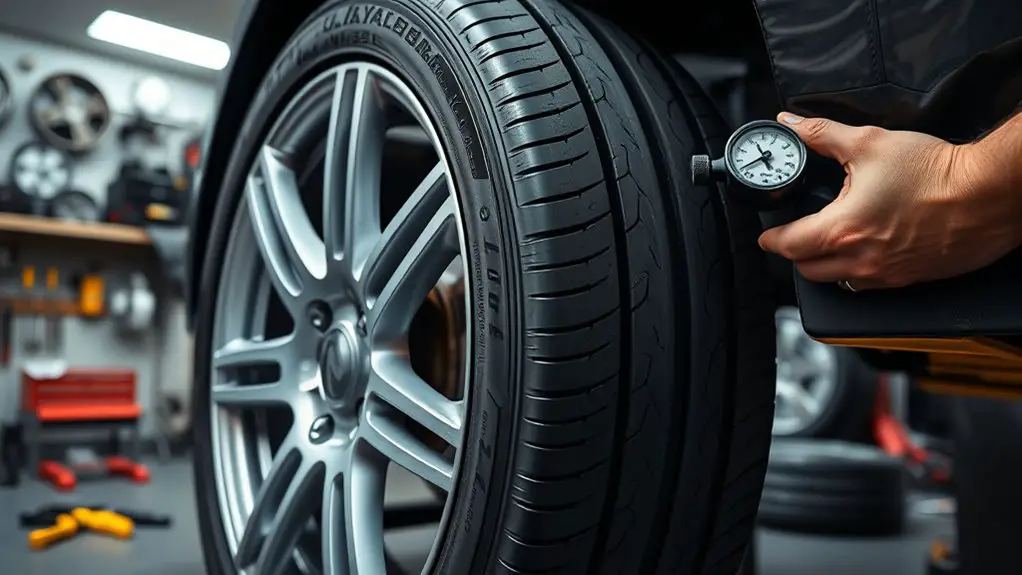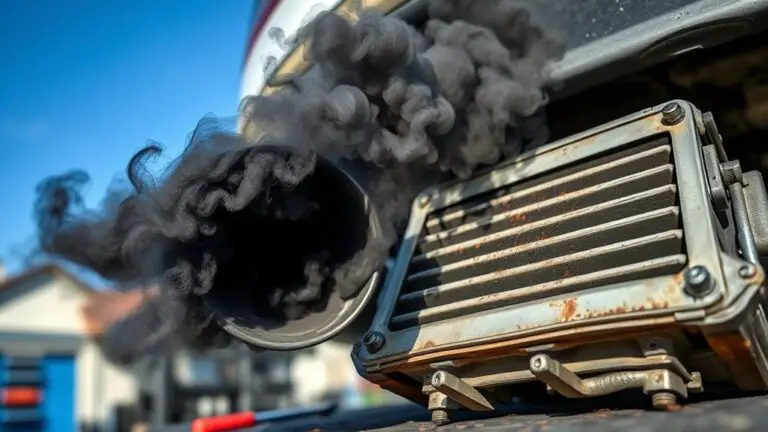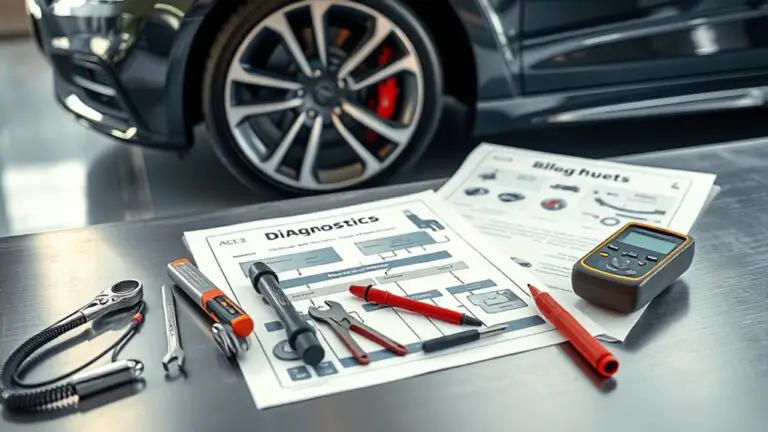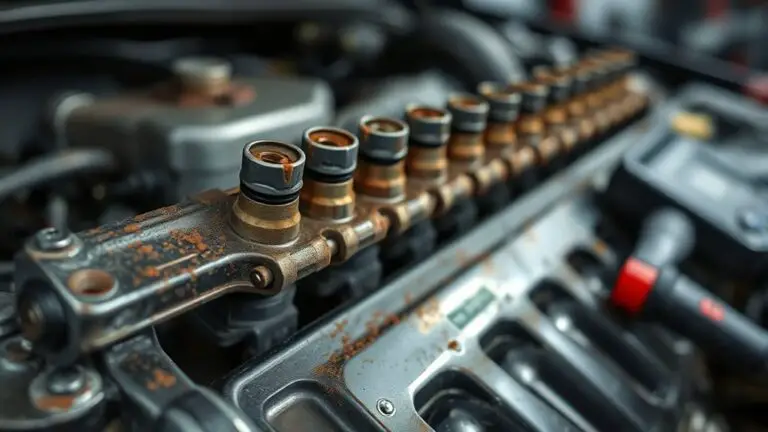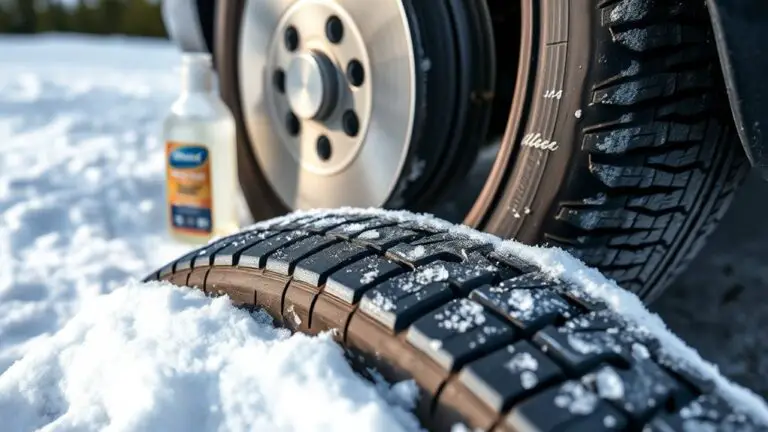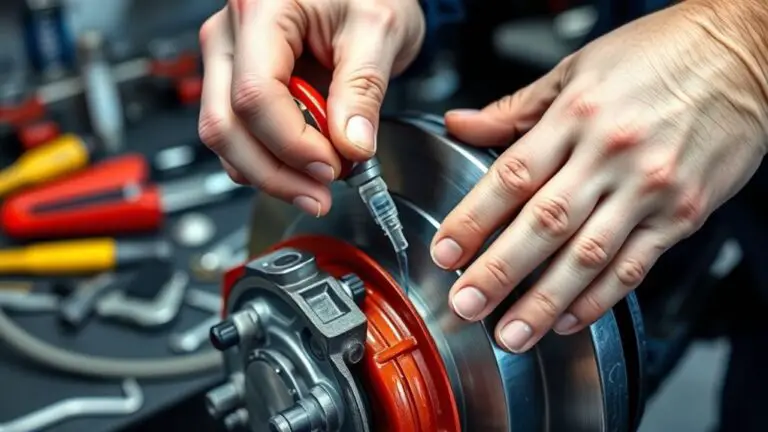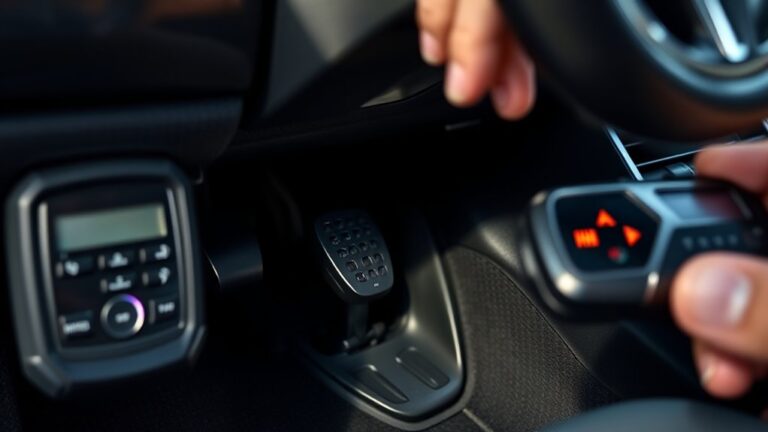Top Causes of Uneven Tire Wear and Preventive Tips
Uneven tire wear happens when several factors aren’t balanced. Start with proper wheel alignment to avoid pulling and scrubbing, and keep toe, camber, and caster in spec. Check tire pressure monthly and inflate to each axle’s recommended PSI with cold readings. Inspect suspension for worn parts that cause bouncing or clunking. Drive smoothly—avoid hard accelerations, sudden braking, and late steering inputs. Don’t mix tread sizes or wear patterns. A quick, proactive upkeep plan pays off and you’ll uncover more tips soon.
Improper Wheel Alignment and Its Effects

Misalignment is a common culprit behind uneven tire wear, and it doesn’t just shorten tire life—it can affect handling and safety. You’ll notice pull, vague steering, or a need to constantly correct your wheel direction. When wheel alignment is off, steering angles aren’t in sync with the road, so tires scrub instead of roll smoothly. That scrubbing heats, wears tread unevenly, and shortens tire life without warning. A precise check targets camber, toe, and caster values to restore balanced contact with the pavement. You don’t need to guess—alignment services align the wheels to factory specifications, restoring predictable steering response and even tread wear. If you feel a sideslip or the steering wheel isn’t centered when cruising straight, it’s a signal to inspect alignment rather than assume tire pressure or suspension alone. Regular alignment checks conserve tire life, improve fuel efficiency, and keep you moving with confident, freedom-driven handling. wheel alignment, steering angles.
Incorrect Tire Pressure and Inflation Practices
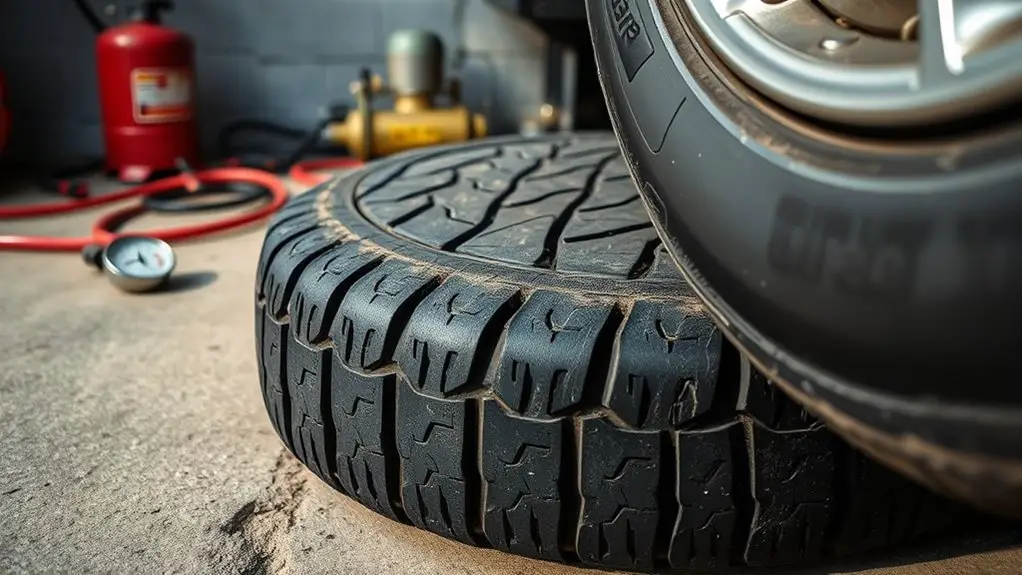
Incorrect tire pressure and inflation practices can quietly wreck tread wear and handling, so start with the right numbers from your vehicle’s door placard or owner’s manual and check pressures when tires are cold.
Incorrect tire pressure can quietly ruin tread wear; start with door placard numbers and check when cold.
- tire pressure must match the recommended spec for each axle, not a single “one size fits all.”
- inflation techniques matter: use a reliable gauge, inflate in small increments, and recheck after a few minutes as temps shift.
- maintain even pressure across all four tires to preserve balance, grip, and tire life.
When you ignore these steps, you’ll notice flatter centers, cupping, or shoulder wear, plus reduced fuel economy and worse cornering feel. Make it a habit to verify pressures monthly and after long trips or changes in load. Use the vehicle’s recommended PSI as your baseline, not guesswork. Consistent, precise inflation keeps tread contacting the road properly and prevents premature uneven wear, giving you safer, more confident driving and genuine freedom on the road.
Worn or Damaged Suspension Components

Worn or damaged suspension components can quietly undermine handling and tire wear, so inspect for telltale signs like clunking noises, excessive bounce, or uneven tire wear that isn’t explained by inflation or alignment. If you notice drifting steering, poor cornering stability, or a rough ride, check springs, bushings, and linkages for wear or damage. Worn suspension lets tire patches skip traction, accelerating cupping and feathering across edges. Start with shock absorber maintenance: inspect for leaks, degraded damping, or bottoming; replace or upgrade as needed. Consider suspension upgrades that suit your driving style and load, especially if you frequently carry heavy loads or drive on rough roads. Regularly test ride after any work to confirm firm control without harshness. Align your maintenance with tire rotation schedules and tire condition checks. Prioritize quality components, proper installation, and correct torque to preserve stability, comfort, and even wear.
Aggressive Driving Habits and Road Handling
Aggressive driving habits can dramatically affect tire wear and handling, so you’ll want to curb hard acceleration, abrupt braking, and late steering inputs. When you push the tires beyond their grip, you create heat, reduce traction, and hasten edge wear. You’ll notice more tread scrubbing on the shoulders and uneven contact with the road.
- aggressive acceleration: launches that spike torque heat the tire footprint, causing irregular wear and reduced grip over time.
- sudden braking: aggressive stops shuttle weight and friction to the tread, inviting flat spots or cupping if repeated on the same wheels.
- late steering inputs: late or abrupt steering drags cause scrubbing, echoing through the tire carcass as it fights the change in direction.
Keep it smooth: gradual acceleration, measured braking, and anticipation at corners preserve tread life and confident road handling. Your freedom of ride thrives with consistent contact patches.
Mixed or Uneven Tire Tread Sizes
Mixing or uneven tire tread sizes changes how your car contacts the road, and it can upset handling and stability if left unchecked. When you mix tread patterns or uneven tread depth, your vehicle doesn’t grip evenly, so steering feel, braking, and cornering become unpredictable. You’ll notice pull, vibration, or excessive tire wear on one end. To stay safe, match tires by size, type, and tread depth, and replace in sets when possible. If you can’t, choose a standardized rotation pattern and monitor wear closely.
| Tread mismatch | Practical check | Action to take |
|---|---|---|
| Mixed tread patterns | Inspect alignment and balance | Replace with matching tread |
| Uneven tread depth | Compare across tires | Rotate and recheck wear |
| Different brands | Check warranty and performance | Standardize tires |
| Different compounds | Test brake response | Align and balance, consider replacement |
| Worn vs new | Measure tread depth | Replace oldest first |
Keywords: mixed tread patterns, uneven tread depth.
Driving Surface and Road Conditions
Driving surface and road conditions directly influence tire wear and handling; even small changes in pavement can alter grip and tire pressure distribution. You’ll notice grip shifts between smooth asphalt, chip seal, and rough concrete, affecting tire wear patterns and ride comfort. Stay aware of surface texture, temperature, and moisture, since these factors magnify wear on specific tires.
- Pavement types: rough surfaces scuff compounds faster and can stress edges, so check tread depth regularly and rotate to even out wear.
- Road debris: embedded grit or stones can create localized wear ribs and puncture risk; keep tires inflated to the correct pressure to resist deformations.
- Wet vs dry conditions: standing water reduces traction, speeding edge wear; adjust speed and following distance to preserve contact and wear balance.
Conclusion: match your driving style to the surface, monitor changes, and rotate tires to maintain even wear across all positions.
Uneven Load Distribution and Overloading
Overloading shifts more weight to your tires, increasing uneven wear and reducing handling. Watch for signs like excessive heat, uneven tread depth, or unusual tire wear patterns that echo load strain and overload impact. Keeping loads balanced and within your vehicle’s limits helps protect tire life and overall safety.
Uneven Load Strain
Uneven load strain occurs when a vehicle isn’t carrying weight evenly or is overloaded, which places extra stress on one or more tires and their contact patches.
- You exceed load capacity with a single heavy item and ignore axle limits.
- You load diagonally or front-to-back without balancing weight distribution.
- You neglect securing cargo, causing shifting during drive and sudden tire pressure changes.
To prevent issues, check weight distribution before trips and remember that safe handling hinges on proper load capacity and proportional weight distribution. Keep tire pressures aligned with the vehicle’s recommended settings, adjusted for load. Distribute passengers and cargo so all corners share the burden reasonably. When you’re mindful of balance, your tires wear calmer, grip steadier, and you stay in control—freedom without sacrificing safety or performance.
Overload Impact Signs
Overload can disguise itself as subtle handling changes until it becomes obvious in tire wear and vehicle response. You’ll notice uneven tread wear, pulls, and delayed steering input as the load shifts. Look for overload symptoms like excessive tire stress, sidewall flex, and trumpet-shaped wear on shoulders, especially after heavy cargo or trailer use. When weight isn’t distributed evenly, front and rear tires endure different loads, accelerating wear patterns and reducing grip in corners. Check inflation against load, because underinflation combines with overload to magnify wear. Avoid guessing—weigh loads and verify axle distribution routinely. If you consistently carry near-maximum loads, plan routes and loading to minimize abrupt weight shifts. Regular inspections catch warnings early, preserving tire life and safe handling for freedom in your journeys.
Regular Maintenance and Inspection Practices
Regular tire inspections identify wear early and prevent surprises. Keep tires properly inflated to the recommended pressure and check for uneven tread or bulges each month. Verify wheel alignment is balanced and tires are rotated as recommended to maintain even wear across all tires.
Regular Tire Inspections
Regular tire inspections are essential to catch wear patterns early and prevent problems down the line. You stay in control when you check visually and feel for changes between drives, noting tire tread wear and any irregular edges. Keep your routine simple, deliberate, and consistent with your schedule to support steady performance and safety. Focus on clear signals and practical actions you can take now.
- Inspect for tread depth and evenness, documenting any spots that look low or misaligned, and compare to your prior checks.
- Check for embedded objects, cracks, or bulges that signal potential failure, acting promptly if you find concerns.
- Record inspection frequency and outcomes, adjusting cadence based on driving conditions, wear rate, and vehicle type.
Proper Tire Inflation
Maintaining proper tire inflation is essential for safety and efficiency, and doing so starts with knowing the manufacturer’s recommended PSI and checking it when tires are cold. You’ll keep tire pressure steady by scheduling regular checks, especially during temperature shifts or before long trips. Don’t rely on a quick glance at the gauge; use a reliable gauge and compare to the exact spec for front and rear tires. Underinflation increases rolling resistance and heat; overinflation harshly reduces contact patch and ride quality. Immediate fixes matter: adjust to the recommended PSI and recheck after a few miles. Benefits accumulate: better handling, steadier steering, and consistent tire wear. Tire pressure accuracy directly supports fuel economy, safety, and overall performance—these inflation benefits are worth your disciplined routine.
Balanced Wheel Alignment
A balanced wheel alignment isn’t a one-and-done task; it’s an ongoing maintenance activity that keeps your vehicle tracking straight and tires wearing evenly.
You’ll keep freedom of drive through regular checks that prevent drift and vibration. For practical results, treat alignment as preventive care, not a repair after symptoms.
1) Schedule wheel balance and alignment checks every 6–12 months, or sooner if you notice pulling, uneven wear, or steering it’s not your imagination.
2) Inspect tires and suspension components during every tire rotation, looking for misalignment indicators and abnormal wear patterns.
3) Use precision gauges and professional alignment equipment to verify toe, camber, and caster settings, ensuring balanced steering response and smoother rides.
Frequently Asked Questions
What Causes Pull to One Side Despite Fresh Tires?
Imagine your car as a canoe on a restless river, paddling off its true course. You pull to one side because alignment issues or brake problems tug subtly at the wake. Fresh tires don’t erase this drift. Check wheel alignment, suspension, and steering components; inspect brakes for sticking calipers or uneven wear. Correcting these keeps you straight, safe, and free to ride the current with confidence. Routine alignments and brake service protect your journey.
Can Tire Wear Indicate Hidden Wheel Bearing Issues?
Yes, tire wear can indicate hidden wheel bearing issues. If you notice uneven wear plus noisy or rough steering, check wheel alignment and suspension issues first, then inspect bearings for play or grinding. A worn bearing can mimic alignment faults, so don’t ignore vibrations or drifting. Regularly rotate tires and monitor wear patterns. If alignment or suspension checks don’t explain it, have a pro test the bearings and related components promptly to avoid failure.
Do Temperature Changes Affect Tread Wear Rate?
Temperature changes do affect tread wear rate. You’ll see faster wear in heat and more uniform wear as seasons shift to cooler temps, because rubber compounds react to heat and moisture. Temperature effects combine with seasonal changes to influence grip, pressure, and aging. You should check tire pressure regularly and adjust with seasons, inspect for cuts or bulges, and rotate tires. Stay aware, drive cautiously, and tailor maintenance to the climate you live in.
Can Tire Rotation Patterns Prevent Uneven Wear?
Yes, tire rotation patterns can prevent uneven wear. By rotating tires regularly, you disrupt wear patterns and balance tread life across all four tires. Aim for rotating every 5,000–8,000 miles, or per your vehicle’s guidance. You’ll reduce cupping, feathering, and shoulder wear, and keep grip symmetric. Track wear, inspect for anomalies, and adjust rotation sequence as needed. Consistent rotations protect performance, safety, and you’ll notice steadier handling and extended tire life.
Is Tire Aging as Risky as Tread Depth Loss?
Tire aging isn’t as risky as tread depth loss, but it’s still serious. Think of a worn roof shingle: it leaks more, even if the visible surface looks fine. You should monitor tread depth and replace when it’s low, because tire maintenance protects you from unpredictable grip loss. Rubber deterioration accelerates with heat and time, so prioritize inspections, rotation, and proper storage to stay safe on the road.

